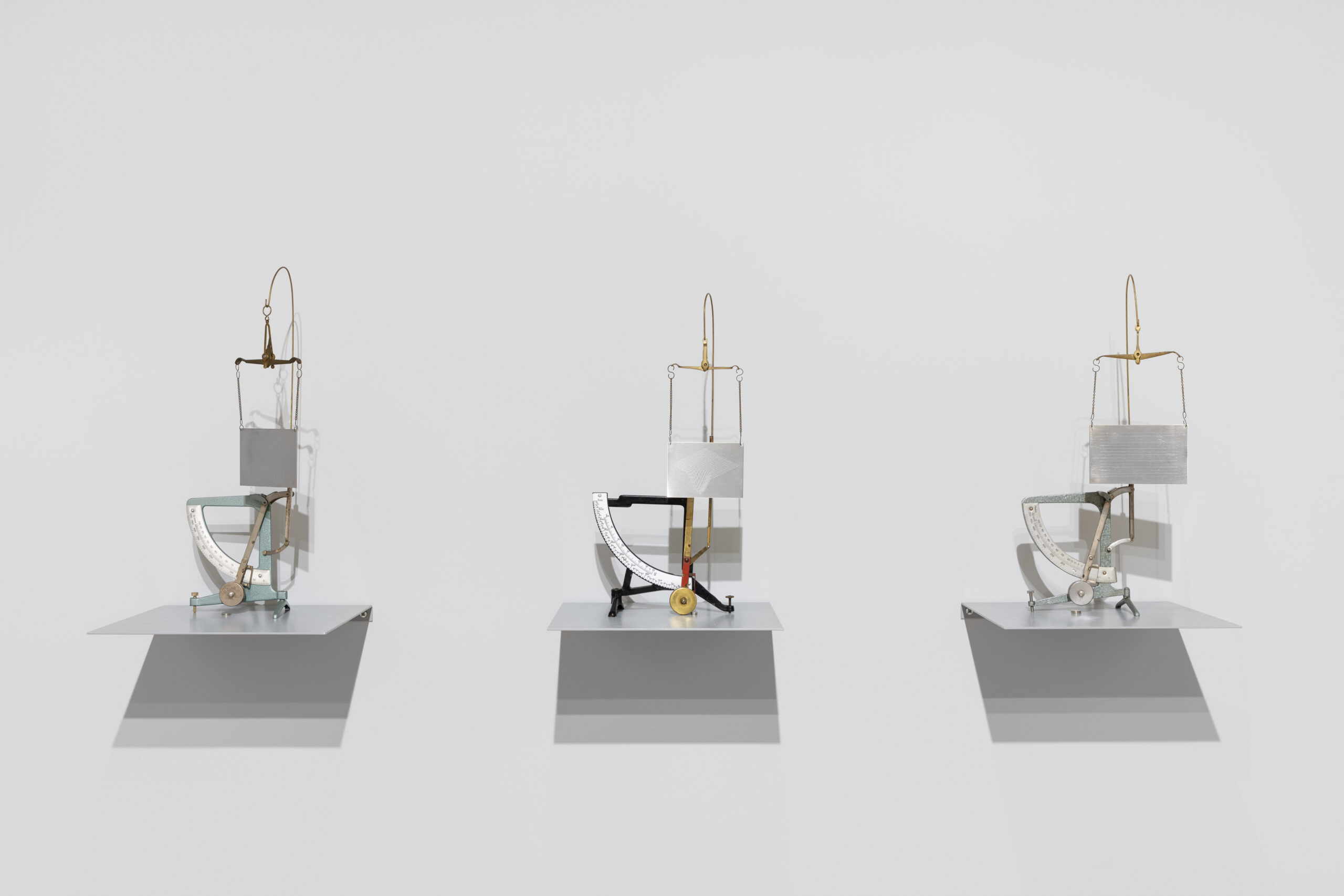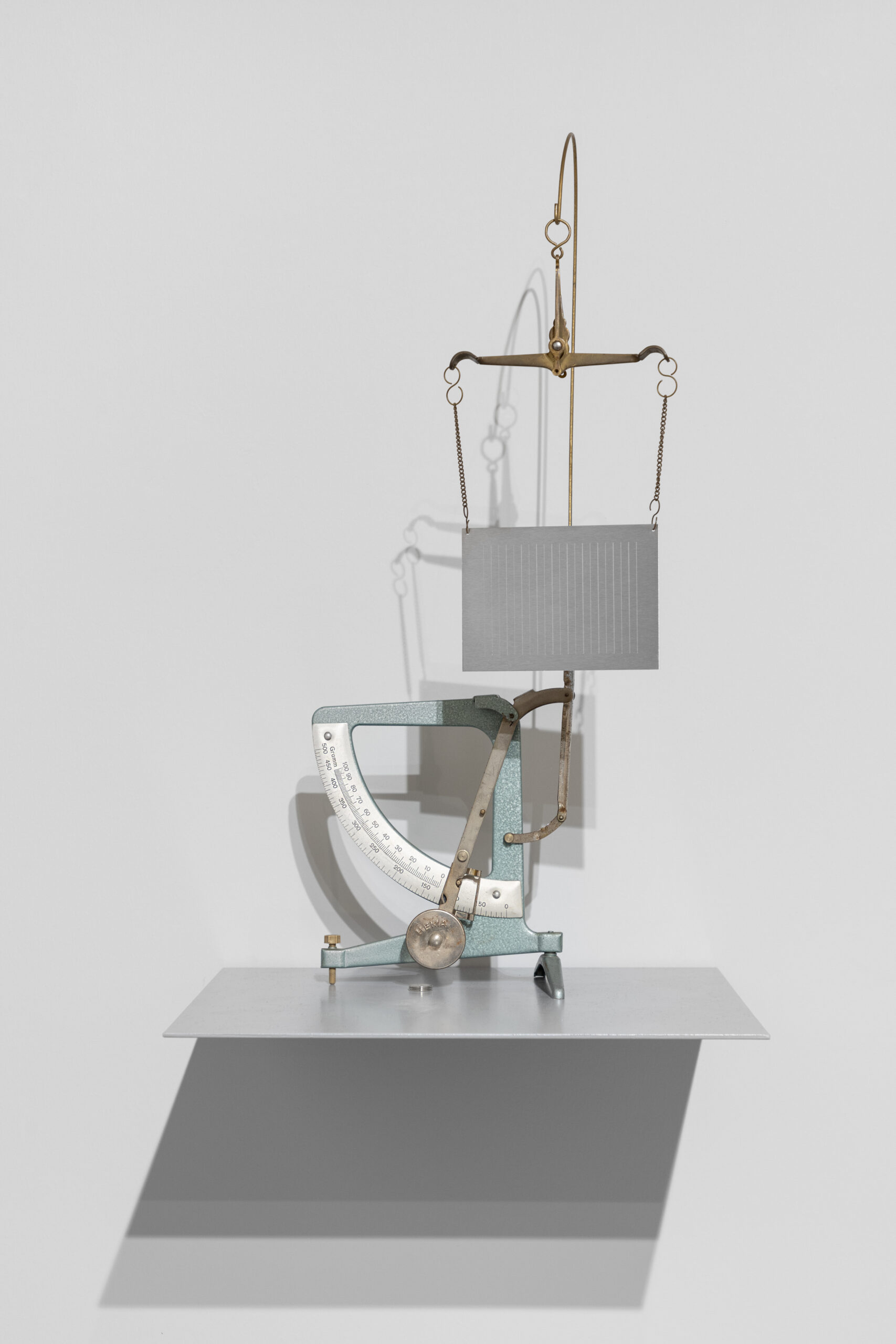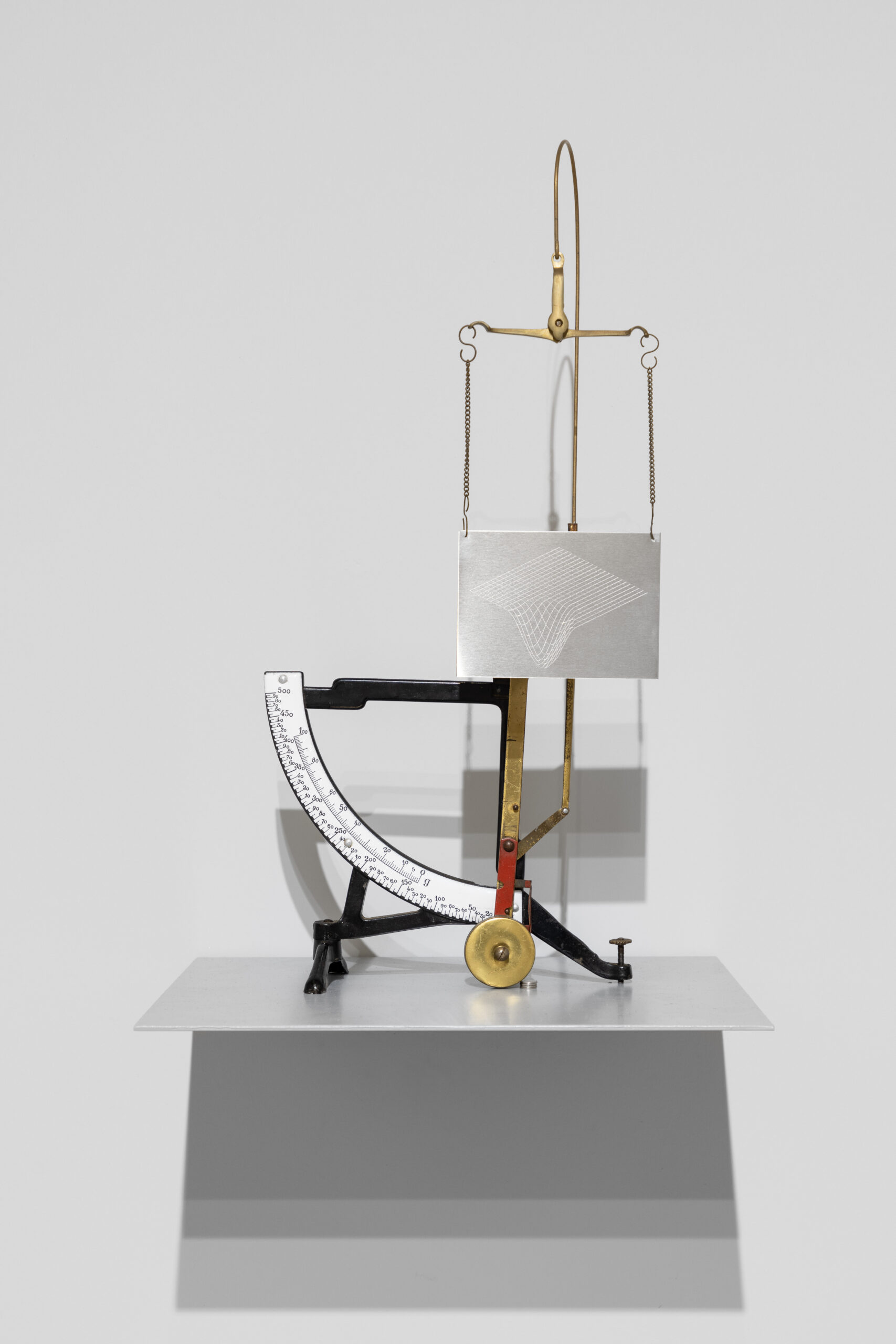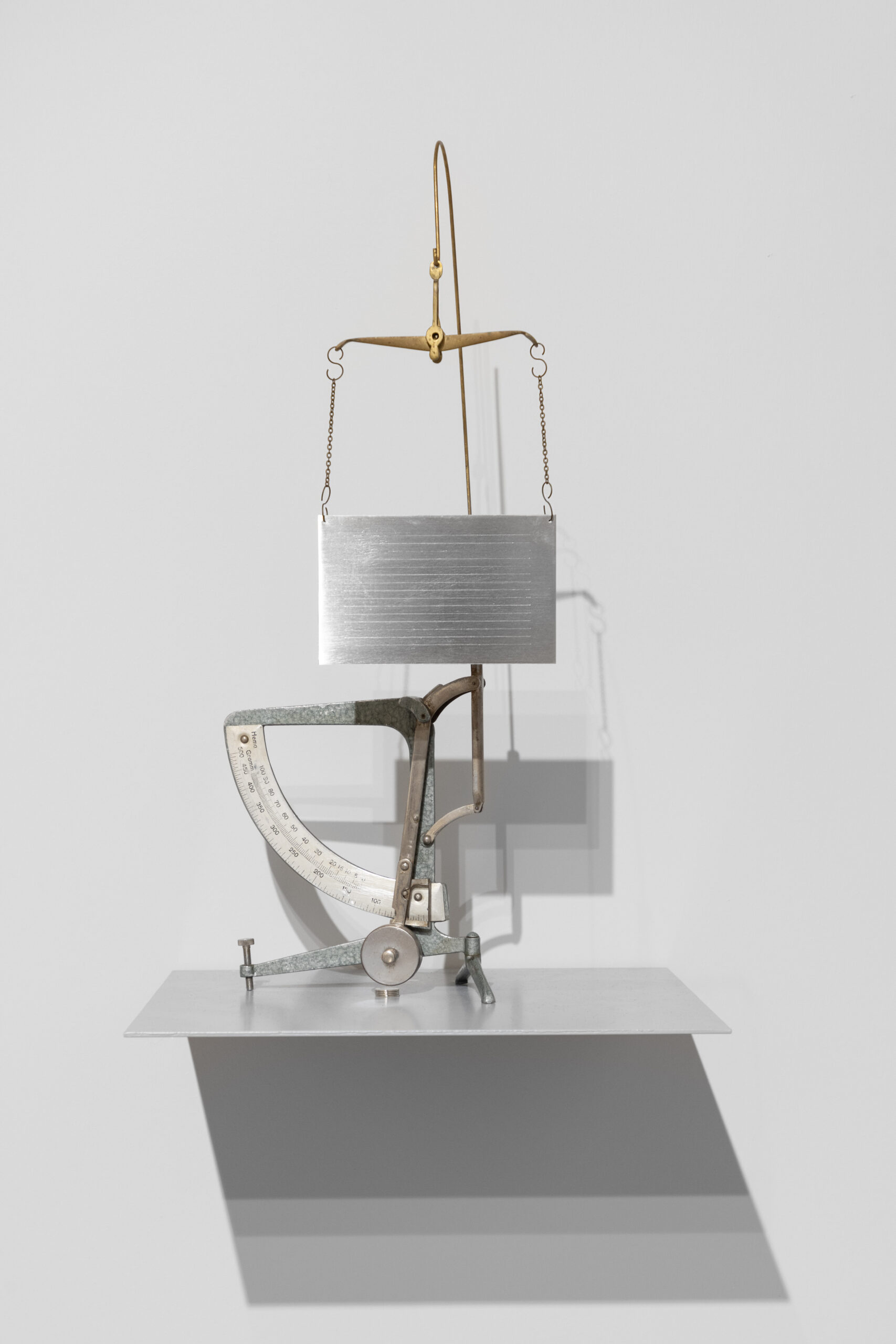Time is a strecthing of the soul
Três balanças de correspondência – objeto frequentemente transformado pelo artista no seu trabalho – surgem como peças de um enigma a resolver. Em cada uma repousa uma finíssima chapa metálica com desenhos quase invisíveis, gravados na superfície que, também ela, parece ter a dimensão de uma carta. O peso que julgamos terem não corresponde ao peso total que as balanças indicam – sendo estas sorrateiramente atraídas por ímans em tensão – sugerindo que aqueles objetos singelos e leves carregam em si mais do que aparentam. Como três momentos de cálculos proto-matemáticos, reúnem em si a tentativa de deciframento para algo que ficou conhecido na teoria da relatividade como a grelha do espaço-tempo.
A primeira balança apresenta uma série de linhas verticais, estas que se referem às linhas do tempo e que se encontram isoladas como se apenas aquela dimensão ali residisse em repouso. Na direção oposta, por sua vez, a terceira balança indica um conjunto de linhas horizontais – as linhas do espaço. No meio de ambas, a sua junção e a sugestão de algo que se afunda no meio de si, criando um grande buraco negro aquando do seu encontro.
Segundo certas teorias científicas, é nas fendas entre estas duas forças opostas que reside a possibilidade de quebrar a linearidade da perceção entre elas. De certo modo, é como se existissem caminhos secretos e códigos obscuros para as viagens e os viajantes no tempo. O artista re ete sobre esta ideia e sugere que, se existe algo leve, transparente, esguio e discreto é a alma, e talvez seja apenas ela a conseguir verdadeiramente deambular por estes becos e ruelas dimensionais esquecidos ou mal resolvidos. Como se de uma tentativa de escape se tratasse, os três objetos nomeiam a esperança da existência de alguma forma de vida para além do corpo – algo que nenhum cálculo entre o tempo e o espaço conseguem prever ou controlar.
Three correspondence scales – an object often transformed by the artist in his work – appear as pieces of a riddle to be solved. On each scale is a thin metal plate with almost invisible drawings engraved on the surface, which also appears to be the size of a letter. The weight we think they have does not correspond to the total weight indicated by the scales – which are surreptitiously attracted by magnets in tension – suggesting that these simple, light objects carry more than they appear to. Like three moments of proto-mathematical calculations, they bring together the attempt to decipher something that has become known in the theory of relativity as the space-time grid.
The first scale shows a series of vertical lines, which refer to the lines of time and which are isolated as if only that dimension resided there at rest. In the opposite direction, the third scale shows a set of horizontal lines – the lines of space. In the middle of both, their junction and the suggestion of something sinking into the middle of itself creates a large black hole when they meet. According to certain scientific theories, it is in the cracks between these two opposing forces that the possibility of breaking the linearity of perception lies. In a way, it is as if there were secret paths and obscure codes for time travellers.
The artist reflects upon this idea and suggests that if there is something light, transparent, slender and discreet, it is the soul, and perhaps it is only the soul that can truly wander through these forgotten or unresolved dimensional alleys. As if in an attempt to escape, the three objects name the hope of the existence of some form of life beyond the body – something that no calculation between time and space can predict or control.
Eva Mendes



